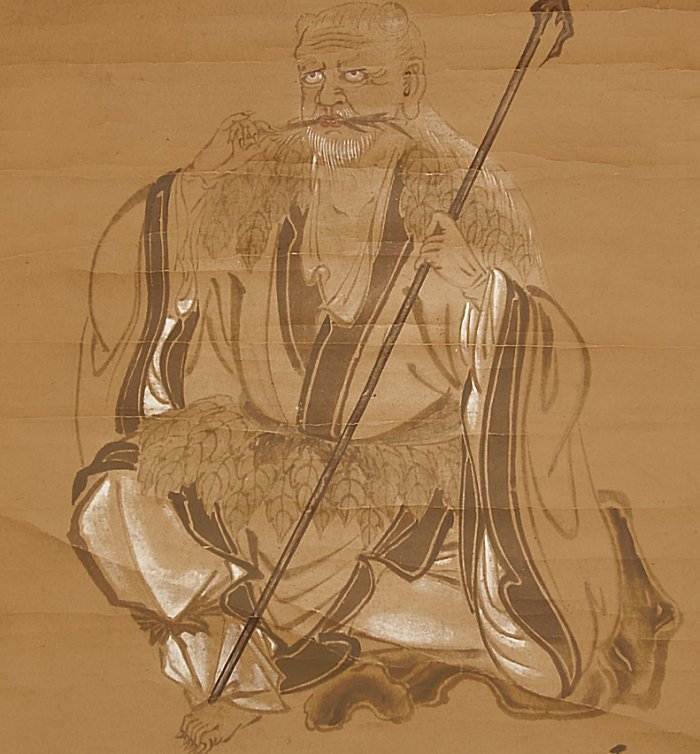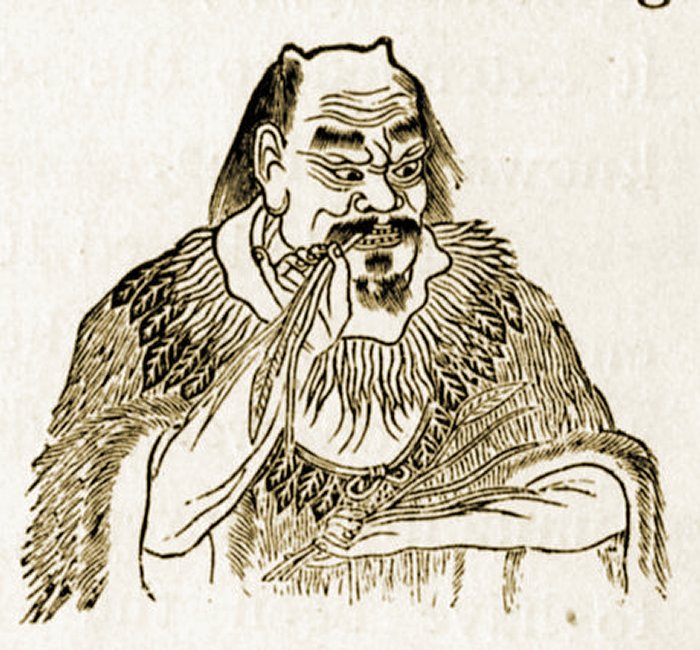Angela Sutherland – AncientPages.com – Over millennia, Chinese people have been influenced by different religious, philosophical, and spiritual teachings, including Confucianism, Buddhism, and Taoism. They historically have had a significant impact on the development of Chinese culture and religion.

Shennong (Japanese Shinnnō) in a Japanese hanging scroll (19th century). Public domain
Among many gods worshiped by the Chinese people is Shennong, also known as Shen Nung (“Divine Farmer” or “Divine Husbandman”), a mythological Chinese ruler who has become a deity in Chinese and Vietnamese religious beliefs. He is worshiped as a cultural hero in China and Vietnam and a patron of medicine, forestry, and agriculture, whose beginnings are linked to Shennong.
As Yan Emperor (the Flame Emperor) – the first Emperor of ancient China – Shennong invented farming tools and herbs for treating his people’s diseases. He could heal sick people, which significantly contributed to his great popularity. He taught how to cultivate and harvest different species of cereals and introduced the use of buffalo carts.
He is considered one of the wisest divine figures of the Chinese pantheon, alongside immortal deities like Lu Tung-Pin and Han Hsiang-Tzu.
However, even much earlier, the image of Shennong was closely related to the deity Yan-di, who lived around 3,000 BC and was the second of the “Three Kings,” believed to be legendary Chinese emperor deities. He’s also considered an ancestor of the Yellow Emperor (Huangdi or Huang-ti) (27th century BC), who, it is said, lived in those misty reaches of time before the Shang dynasty. During his reign, Huangdi introduced writing, wooden houses, boats, carts, and the bow and arrow to the Chinese people.
He also taught them how to make ceramics and cook on coals. He founded a marketplace where people could exchange products and goods, which significantly improved the quality of people’s lives.

Shennong – the Farmer God, tasting herbs to discover their qualities. Public Domain
Mystic surrounds this legendary deity, and ancient Chinese legend says he was born after his mother first saw a fantastic dragon. Born in the 28th century BC, Shennong was very similar to other mythical creatures. He had a man’s face, the body of a snake, the head of a bull, while his nose was that of a tiger.
He was also green, which was the symbol of the color of vegetation.
The legend continues that after the birth of this divinity, nine wells suddenly appeared in the ground. Millet fell from the sky in the form of rain, and Shennong immediately began to plow the land and sow millet, and so, he considered the ancestor of agricultural implements.
In addition, he is also believed to be the first so-called pharmacologist, usually portrayed as an older man in a garment covered with leaves, which he is also holding in his hands. Plants and fruits are hanging from his neck. His other depictions show him as a young man carrying a basket of plants.
With his red whip, Shennong whipped herbs to determine their healing properties and taste qualities.
According to an ancient legend, the inhabitants of the “kingdom of white people” Baimingo gave Shennong a unique animal, ‘yaoshou’ (“medicinal beast”). If someone got sick, it was only necessary to pat this beast on the back, telling him about the sick, as ‘yaoshou’ immediately ran away to find the grᴀss he needed for healing.
Shennong is credited with the discovery of tea as a medicinal remedy and a refreshing drink.
He Died Unexpectedly
Death came to Shennong quite unexpectedly. He tried all kinds of herbs to discover their medicinal properties, thus identifying and classifying the different species of plants, both poisonous and medicinal. This process of experimentation led to the creation of Chinese medicine and the discovery of different flavors (sweet, spicy, salty, bitter, and sour).
Tradition has it that he accidentally swallowed a millipede and died because its legs turned into worms. Another version says he was trying to taste seventy poisonous plants on himself.
The beginning of trade is also ᴀssociated with Shennong because he organized the first bazaars where products were exchanged. In late Chinese mythology, he is also referred to as the patron of medicine, and sometimes he is called Yao-wang (“king of medicines”). His greatest legacy is all the knowledge he acquired and was pᴀssed on to humans.
Updated on February 14, 2024
Written by – A. Sutherland – AncientPages.com Senior Staff Writer
Copyright © AncientPages.com All rights reserved. This material may not be published, broadcast, rewritten or redistributed in whole or part without the express written permission of AncientPages.com





